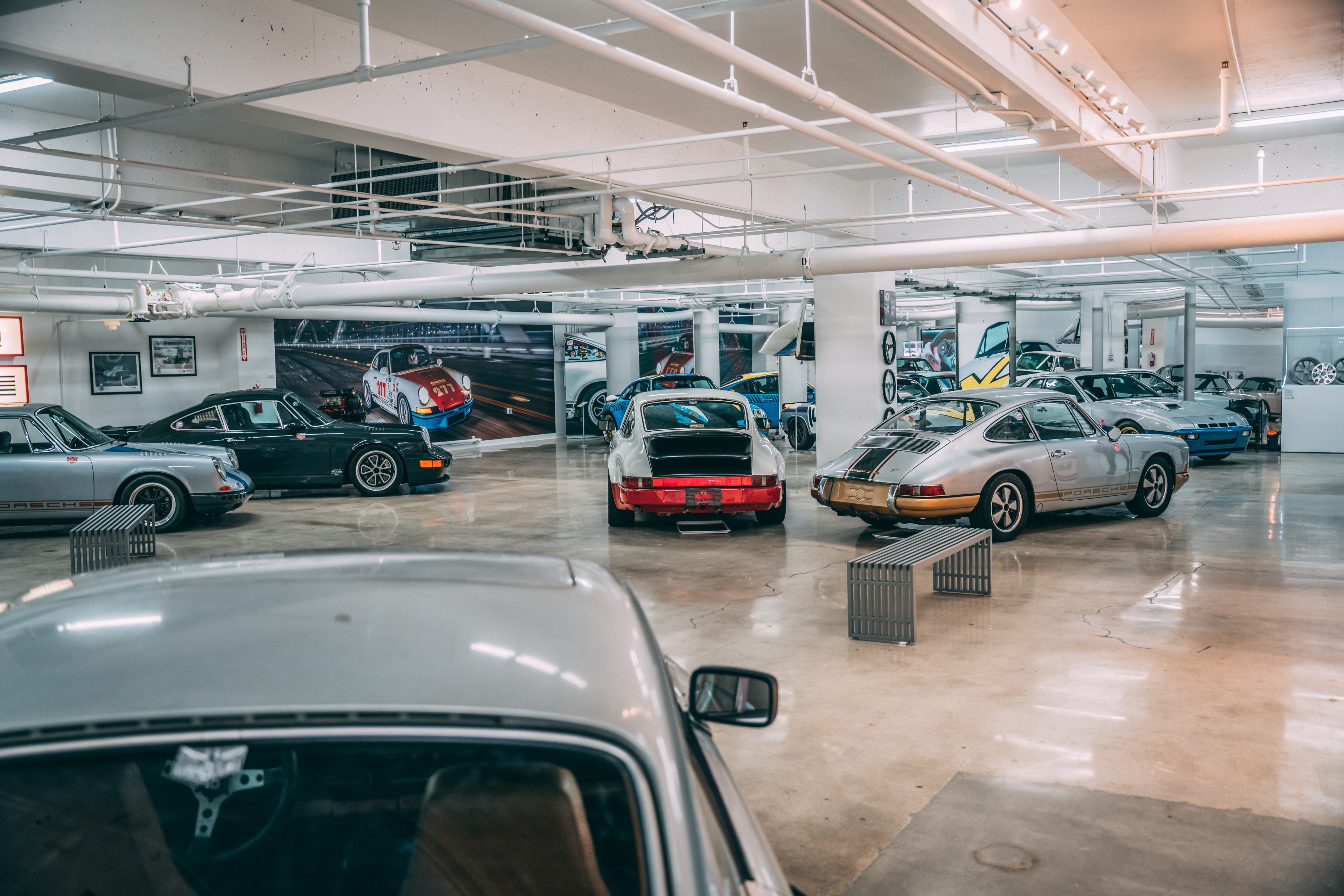In celebration of the 10-year anniversary of the film Urban Outlaw, a collection of Magnus Walker’s Porsches and projects are on exhibit at the Petersen Museum Vault. I took a (virtual) walk-through with Magnus to discuss the exhibit.
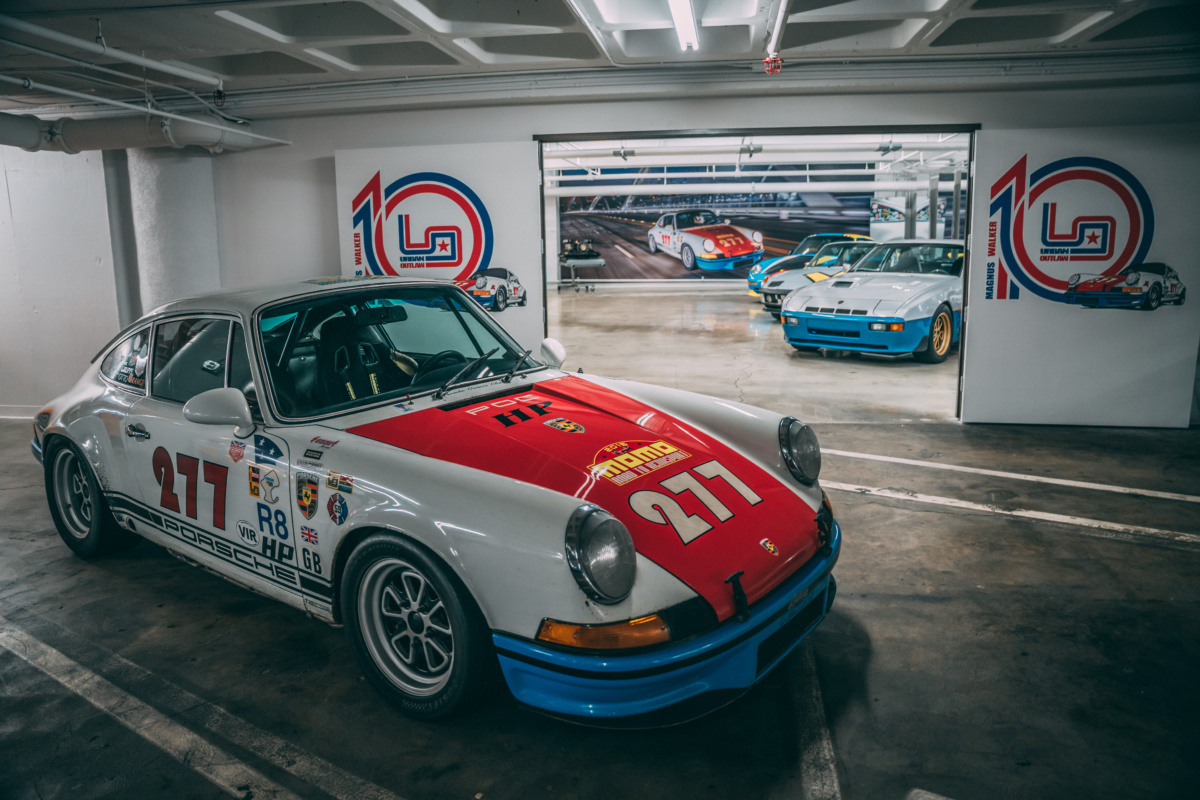
Chris Force: So where are we?
Magnus Walker: The Vault. It’s where the Petersen Museum keep cars that are not necessarily on display at the museum at all times; they rotate in and out.
The vault was one of those areas that was never open to the public until a few years ago. It’s literally the basement of the museum; nothing’s curated down here. It’s a real oddball mix of cars over the past 100 years, so you never really know what you’re going to stroll into.
They set up a room called the Legends Room, and this is the fifth exhibition within that room. The exhibition is celebrating 10 years of the Urban Outlaw film (2012) that led to a 2014 TED Talk, which led to various other collaborations—including Hot Wheels and Nike. The exhibition is cataloging that journey.
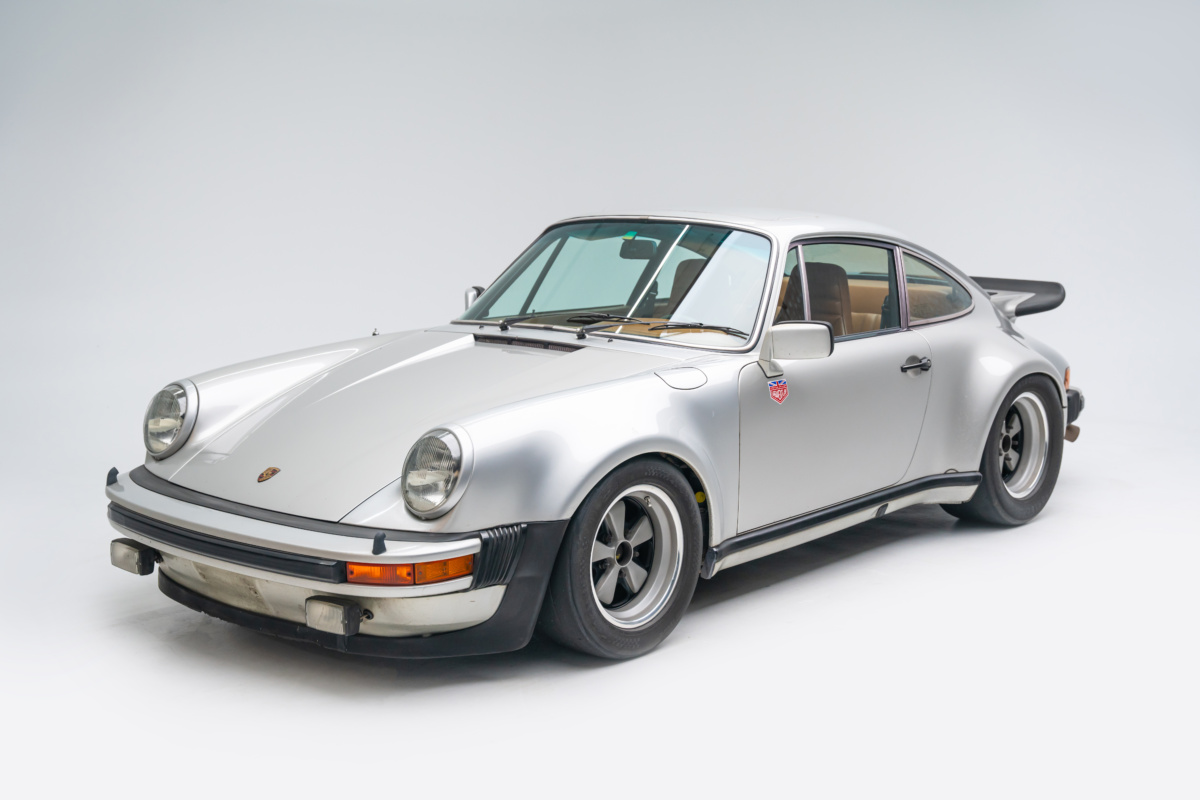
Magnus Walker’s 1976 Porsche 930 Turbo is documented as the first US Turbo ever sold.
Let’s start with the cars. Tell me about this 1976 Porsche 930 Turbo.
It’s one of the 10 cars on display and the only one that really hasn’t been modified from a performance or aesthetic point of view. It’s significant because that model did start my love affair with Porsche 45 years ago. And that car is documented as the first US Turbo ever sold. I’m the fourth owner of it, and it has a lot of character and a lot of soul. That’s a pretty special car for me.
All 10 cars on display at the exhibition were driven there. Myself and nine other buddies each got a car to drive to the Petersen Museum. The majority of cars on display at automotive museums throughout the world, including the Petersen, are not necessarily driven to the exhibition—let alone driven into the exhibition room. I’m all about driving these things, so it only seemed natural to drive all 10 cars to the exhibit as opposed to doing the expected and putting them on a trailer.
What makes the Porsche 930 Turbo so iconic to you?
That is the silhouette that represents Porsche to me. I think any kid growing up anywhere in the world in the ’70s and ’80s probably had posters on the wall of the 930 Turbo, a Lamborghini Countach, and a Ferrari 512. These were the iconic silhouettes.
Growing up the 930 Turbo represented speed standing still; it was the car I dreamt about. It was the car I ended up owning. It represents a dream come true. A personal sense of achievement. It is an iconic shape that has stood the test of time. That design is almost 50 years old. This car is also a lifelong LA car, meaning it’s never been registered outside of California, and it was delivered in Hollywood. It’s a time capsule.
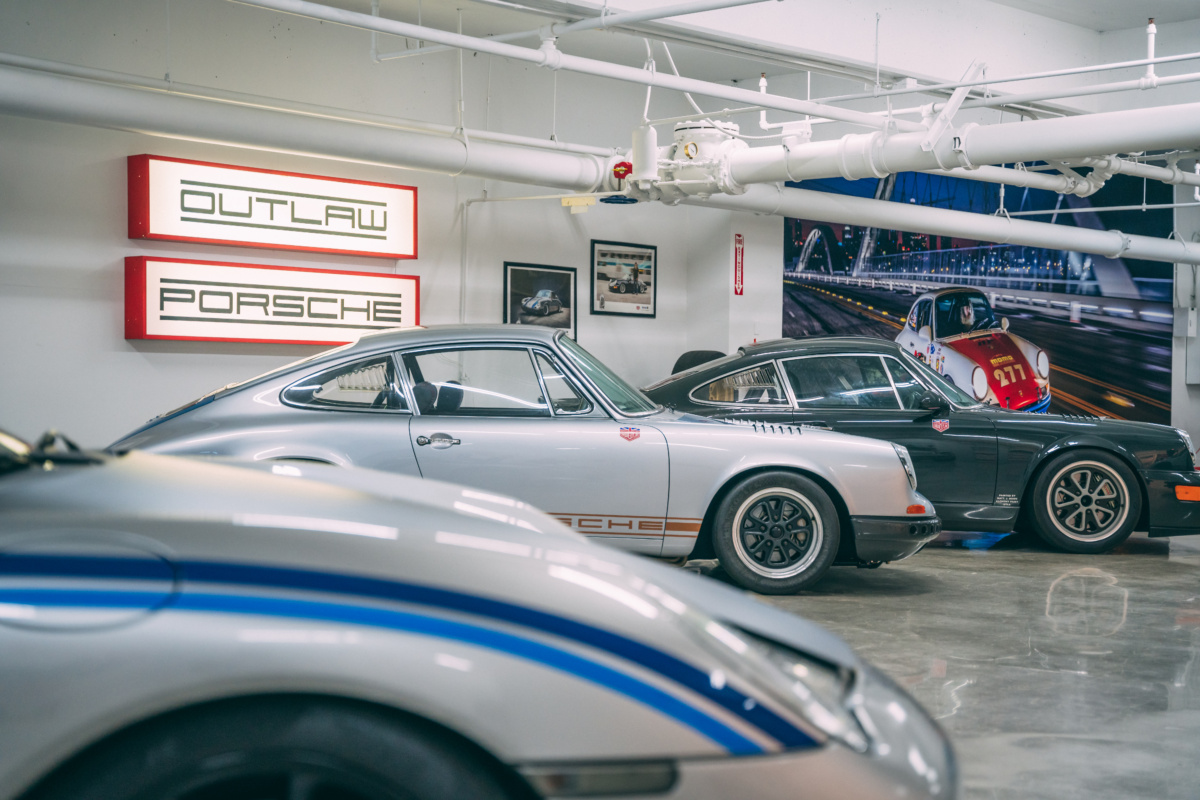
What other cars do you think have iconic shapes?
The Mini is an iconic shape, the E-Type Jaguar is an iconic shape, the Ferrari Daytona is an iconic shape. The Toyota Corolla is an iconic shape, the Ford Mustang is an iconic shape. The Corvette is an iconic shape. These all stand the test of time and look fast for the most part. People recognize them.
The great thing about the Porsches, sort of like the Mustang and the Corvette, is they’ve been in constant production all that time.
Has anyone made a car in the last decade that you think will become iconic?
The problem for me with car design now is, for the most part, they have become appliances. it’s an interesting time where things are moving full on electric, but 20 years down the road there’s nothing more dated than early electronics, right? Technology moves fast.
What is an iconic shape today? Everything becomes homogenous. All hypercars look really similar. They’ve all got really big proportion, they’re not as organic anymore. I don’t really have a current design I can relate to. I’ve never owned a new car. The newest car I own is a 2014 Turbo S, which doesn’t look drastically different than that 930 Turbo.

Many of Walker’s early builds from 2008 onward feature a louvered deck lid, which is created by using a three-inch flat louvered die to stamp cooling vents in the rear steel engine deck lid. The effect, finally realized in late 2013 on Magnus’s Porsche 911 SRT, was the first of its kind on any 911.
Is anyone doing interesting design work in modern automobile design now?
I don’t quite get it. Take Lucid for example. This car is built from scratch. It’s not built on an existing platform. But to me it doesn’t look great. It’s like you had a blank piece of paper; you could have made something purely special.
The challenge today is that it seems everything has to be bigger. Cars are big and wide, but there’s still only one person driving them. Roads are smaller and narrower, there’s more congestion, so I don’t understand why cars are getting bigger.
We’ve entered this realm where you have hypercars where 1,000 horsepower is normal, but you can’t use seven tenths of the performance because you run out of open road. Things are getting bigger and faster on paper, but in real world situations you can’t utilize 1,000 horsepower. This is a sweet spot of, you know, anything up to 400 horsepower on a small usable package is probably all you need.
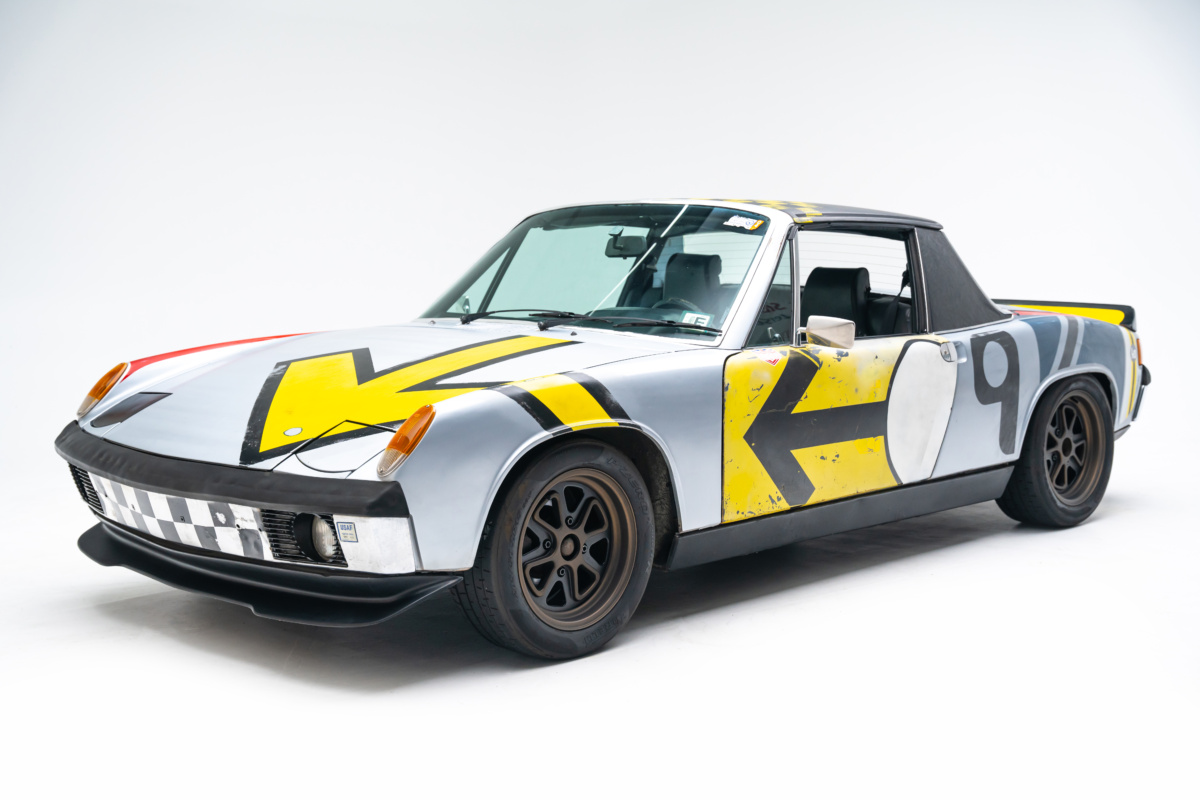
Magnus Walker’s Porsche 914 Art car.
Tell me a little about the 914 Art car.
The 914 Art car was the second 914 I acquired from my buddy Felix Holst, mainly because he’d replaced the door and put a yellow door on it with this little arrow on it, like a mod arrow. I essentially bought it because I liked the door, and that inspired me to do my own interpretation. It was literally old-school—vinyl tape and duct tap— then we rattle canned it. We probably spent no more than $500 worth of materials.
The concept was more of this punk rock DIY attitude. The bottom line with that car is that it’s the least desirable 914, the bottom of the barrel, what some people would call a poor man’s Porsche, but that’s one more reason why it’s on display at the Petersen Museum; it’s the underdog. It’s still a fun little car.
What do you think of people making Porsches into Baja racers?
I’m all about it. My buddy TJ Russell did the Baja 911, which is perhaps the best executed off-road car. Porsches have been going off-road since day one, so this is nothing new.
I‘m all about if you own the car, you modify it, you choose to do whatever you want to do with it. I’m not a purist. There’s nothing new about putting 911s in the dirt. This is just a fashion statement or a trend that’s come around.
Part of what’s great about 911s is that they are pretty easy to modify. You want to go off-road? Lift them up. Want to go faster? Make them stop better. This is what’s great about the Porsche world, unlike Ferraris and Lamborghinis that tend not to get modified. James Dean was customizing Porsches back in the ’50s.
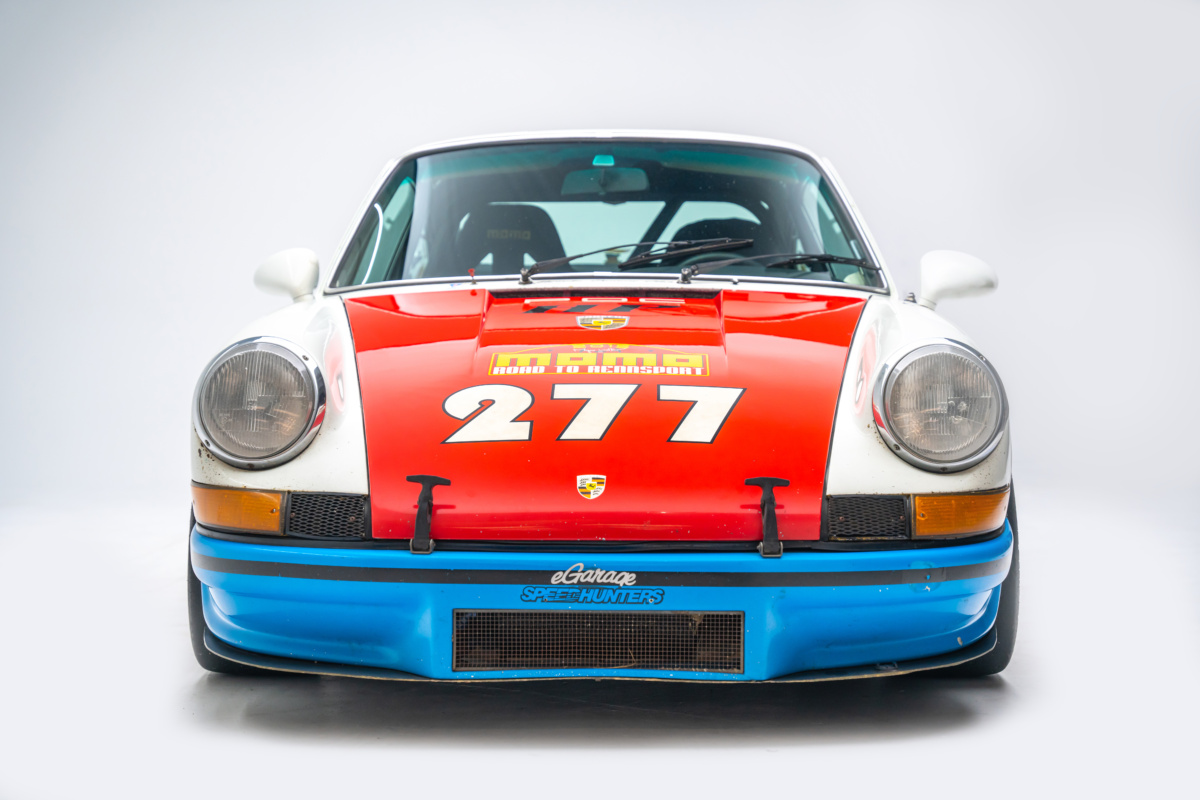
Magnus Walker purchased this 1971 Porsche 911 T for $7,500 at a swap meet.
What makes the 277 so special to you?
The sum of the parts of 277 is it’s nothing special. It’s a 1971 911 T; that makes it 51 years old. I’ve owned it for 23 years. I bought it at a swap meet for $7,500. I’ve done hundreds of track days in that car where I’d literally drive the car to Laguna Seca, do some track days, and drive it back.
I didn’t throw a ton of money at it. It was developed with a purpose of being a streetable track car, not a full-blown race car. It’s gone through a lot of engines, and for me it’s the car I’m most comfortable in. It’s not the fastest car I own, but if I’m only keeping one it’s the 277. It’s been in the Need for Speed video game, it’s been in the CSR Racing game, and people have been inspired by that build to make their own similar builds. It’s a relatable car that’s been used and abused. It’s a survivor. It’s got a lot of soul and character and patina that develops over time.
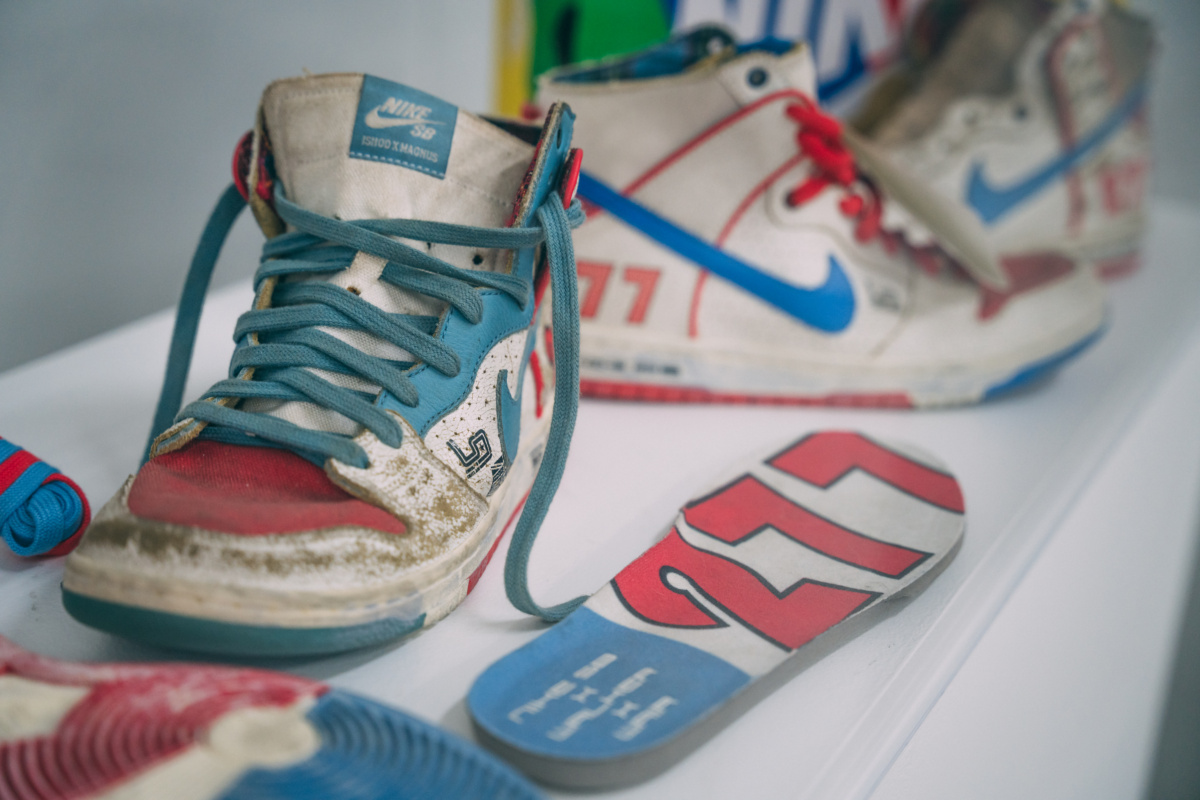
A collaboration between Nike and Magnus Walker.
There’s also a lot of artwork on display here. How did you choose what to exhibit?
The display is more than the 10 cars; it’s the 10 years of opportunities, the 10 years of artwork people have sent me. There’s over 20 art pieces of 277—all non-commissioned artwork that people painted and illustrated and sent me. I’m proud of that wall of artwork.
The goal of the exhibition is to give sort of a taste of my garage, my world. You’ll see in the display cases the Nike 277 Dunk. I have six editions of my book, Urban Outlaw: Dirt don’t Slow You Down, in three languages on display. I have over 30 collaborative cars I’ve designed with Hot Wheels on display, plus my MOMO steering wheel and the 1552 Outlaw road wheels.
There’s no agent or manager behind me to pitch to Nike, ‘Hey, let’s collaborate on a shoe.’ I got an email from someone at Nike in the SB department asking, “How do you feel about collaborating?” Everything on display happened organically. It’s all part of living life to the fullest.
Urban Outlaw is on view at the Peterson Museum through January 31, 2023. For more info visit petersen.org
